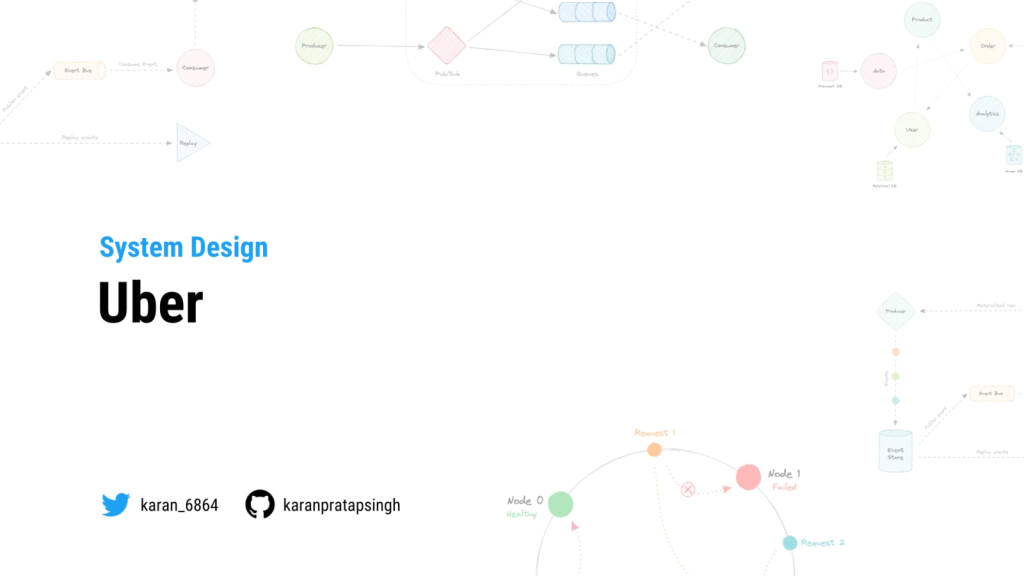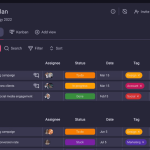Master The Art Of Software Engineering: Join The Ultimate Tutorial Ride!
Software Engineering Tutorial Ride
Introduction
Welcome, readers, to an exciting journey into the world of software engineering. In this tutorial ride, we will explore the fundamentals, techniques, and best practices of software engineering. Whether you are a beginner looking to kickstart your career or an experienced professional seeking to enhance your skills, this article will provide you with valuable insights and knowledge to succeed in the field of software engineering.
1 Picture Gallery: Master The Art Of Software Engineering: Join The Ultimate Tutorial Ride!

Software engineering is a discipline that combines computer science, mathematics, and engineering principles to design, develop, and maintain software systems. It encompasses various processes, methodologies, and tools that ensure the creation of high-quality, efficient, and reliable software.
Throughout this tutorial ride, we will delve into the what, who, when, where, why, and how of software engineering, along with its advantages, disadvantages, and frequently asked questions. By the end of this article, you will have a comprehensive understanding of software engineering and its significance in the rapidly evolving digital landscape.
What is Software Engineering?

Image Source: cloudinary.com
Software engineering refers to the systematic and disciplined approach to developing, designing, and maintaining software systems. It involves the application of engineering principles, methodologies, and practices to meet specific user requirements and ensure the software’s quality, reliability, and efficiency.
In simple terms, software engineering focuses on creating software that solves real-world problems, meets user needs, and follows industry standards. It encompasses activities such as requirements gathering, system design, coding, testing, deployment, and maintenance.
The Software Engineering Process
The software engineering process consists of several stages, including:
1. Requirements gathering and analysis: This stage involves understanding and documenting the user’s needs and expectations from the software.
2. System design: In this stage, the software’s architecture and structure are planned, defining how different components will work together.
3. Coding: The actual implementation of the software takes place during this stage, where programmers write the code according to the design specifications.
4. Testing: The software is rigorously tested to identify and fix any bugs or issues before its release.
5. Deployment: The software is deployed and made available to the end-users.
6. Maintenance: After deployment, the software is continuously monitored, updated, and improved to ensure its functionality and performance.
Who Can Benefit From Software Engineering?
Software engineering is a versatile field that offers opportunities for various individuals, including:
1. Developers: Aspiring and experienced programmers can enhance their skills in software development methodologies and practices.
2. Project Managers: Learning software engineering can help project managers oversee software projects more efficiently and effectively.
3. Entrepreneurs: Understanding software engineering enables entrepreneurs to develop innovative software solutions and transform their ideas into successful products.
4. Quality Assurance Specialists: Individuals involved in software testing and quality assurance can gain insights into best practices and techniques for ensuring software reliability.
5. Students: Students pursuing degrees in computer science or related fields can gain a solid foundation in software engineering principles and methodologies.
When Should You Consider Software Engineering?
Software engineering is relevant and beneficial for various scenarios, including:
1. Developing New Software: When you have an idea for a software application or system, software engineering provides the necessary framework to turn that idea into a reality.
2. Enhancing Existing Software: If you have an existing software product that requires improvement or additional features, software engineering can guide you through the process of enhancing its functionality.
3. Joining the Tech Industry: As the demand for software professionals continues to grow, considering a career in software engineering can open doors to exciting job opportunities and a rewarding career.
Where Can You Apply Software Engineering?
Software engineering finds applications in diverse industries and domains, including:
1. Information Technology: The IT industry extensively utilizes software engineering principles to develop enterprise software, web applications, mobile apps, and more.
2. Healthcare: Software engineering plays a crucial role in developing healthcare information systems, electronic medical records, and telemedicine solutions.
3. Finance: Financial institutions rely on software engineering to build secure and efficient banking systems, trading platforms, payment gateways, and risk management software.
4. Automotive: Automotive companies utilize software engineering to design and develop advanced driver assistance systems, infotainment systems, and autonomous driving technologies.
5. Gaming: The gaming industry depends on software engineering to create immersive and interactive gaming experiences across various platforms.
Why Is Software Engineering Important?
Software engineering holds immense significance in today’s technology-driven world due to the following reasons:
1. Efficiency and Productivity: Effective software engineering practices enable the development of efficient and productive software systems that streamline business processes and enhance overall productivity.
2. Quality Assurance: By following standardized processes and rigorous testing methodologies, software engineering ensures the delivery of high-quality software that meets user expectations.
3. Cost Optimization: Adopting software engineering practices helps minimize development and maintenance costs by reducing rework, enhancing efficiency, and ensuring timely delivery of software projects.
4. User Satisfaction: Through user-centered design and requirements analysis, software engineering ensures that software products meet user needs, resulting in higher customer satisfaction.
5. Innovation and Competitiveness: Software engineering fosters innovation by facilitating the development of cutting-edge software solutions, giving organizations a competitive edge in the market.
How Does Software Engineering Work?
Software engineering follows a systematic approach that involves the following steps:
1. Requirement Elicitation: Gathering and analyzing user requirements to understand their needs and expectations from the software.
2. System Design: Creating a blueprint of the software system, defining its architecture, components, and interfaces.
3. Implementation: Writing code based on the design specifications and best coding practices.
4. Testing: Conducting various tests, such as unit testing, integration testing, and system testing, to identify and fix any defects in the software.
5. Deployment: Deploying the software and making it accessible to end-users.
6. Maintenance: Continuously monitoring, updating, and enhancing the software to ensure its functionality, security, and performance.
Advantages and Disadvantages of Software Engineering Tutorial Ride
Like any other approach or methodology, software engineering tutorial rides have their own advantages and disadvantages:
Advantages
1. Comprehensive Learning: Tutorial rides provide a structured and in-depth learning experience, covering all essential aspects of software engineering.
2. Hands-On Practice: Most tutorial rides include practical exercises and examples, allowing learners to apply their knowledge and gain practical experience.
3. Self-Paced Learning: Tutorial rides often offer flexible learning schedules, enabling learners to study at their own pace and convenience.
4. Cost-Effective: Compared to traditional classroom-based training, tutorial rides are generally more affordable, making them accessible to a wider audience.
5. Accessibility: Tutorial rides can be accessed online from anywhere in the world, eliminating geographical barriers and allowing individuals to learn from top experts in the field.
Disadvantages
1. Lack of Personalized Guidance: Tutorial rides may not provide individualized attention or feedback, which can be challenging for some learners who require personalized guidance.
2. Limited Interaction: Unlike traditional classroom settings, tutorial rides may lack opportunities for direct interaction and collaboration with instructors and peers.
3. Self-Motivation and Discipline: Tutorial rides require self-motivation and discipline to keep up with the course material and complete the learning activities.
4. Limited Networking Opportunities: Online learning platforms may not offer extensive networking opportunities compared to in-person training events.
5. Technical Challenges: Technical issues such as internet connectivity problems or software compatibility can hinder the learning experience in tutorial rides.
Frequently Asked Questions (FAQ)
Q: How long does it take to become a software engineer?
A: The duration required to become a software engineer depends on various factors, including your prior knowledge, educational background, and the learning path you choose. On average, it may take several months to a few years to gain the necessary skills and experience to pursue a career in software engineering.
Q: What programming languages should I learn for software engineering?
A: The programming languages you should learn for software engineering depend on the specific domain or industry you plan to work in. However, some widely used languages in software engineering include Java, Python, C++, JavaScript, and Ruby.
Q: Are software engineers in demand?
A: Yes, software engineers are in high demand due to the increasing reliance on technology in various industries. The demand for software engineers is expected to continue growing as organizations seek to develop innovative software solutions and enhance their digital capabilities.
Q: Can I learn software engineering online?
A: Yes, you can learn software engineering online through various e-learning platforms, tutorial rides, and online courses. These platforms offer comprehensive learning resources, practical exercises, and expert guidance to help you acquire the necessary skills and knowledge.
Q: What are the career prospects for software engineers?
A: Software engineers have promising career prospects, with opportunities in industries such as IT, finance, healthcare, gaming, and more. They can work as software developers, systems analysts, project managers, software architects, or even pursue entrepreneurial ventures.
Conclusion
In conclusion, software engineering is a vital discipline that empowers individuals to design, develop, and maintain high-quality software systems. Through this tutorial ride, we have explored the fundamental concepts, methodologies, and advantages of software engineering. Whether you aspire to become a software engineer or simply want to enhance your knowledge in the field, this tutorial ride has provided you with valuable insights and resources to embark on your software engineering journey. Remember to practice and apply what you have learned, as experience is key in mastering the art of software engineering.
Final Remarks
Friends, software engineering is an ever-evolving field that requires continuous learning and adaptation. While this tutorial ride has provided you with a solid foundation, always stay curious and keep exploring new technologies and practices. Remember to take advantage of online resources, communities, and professional networks to enhance your skills and stay up-to-date with the latest trends. Happy coding!
This post topic: Software Tutorials

